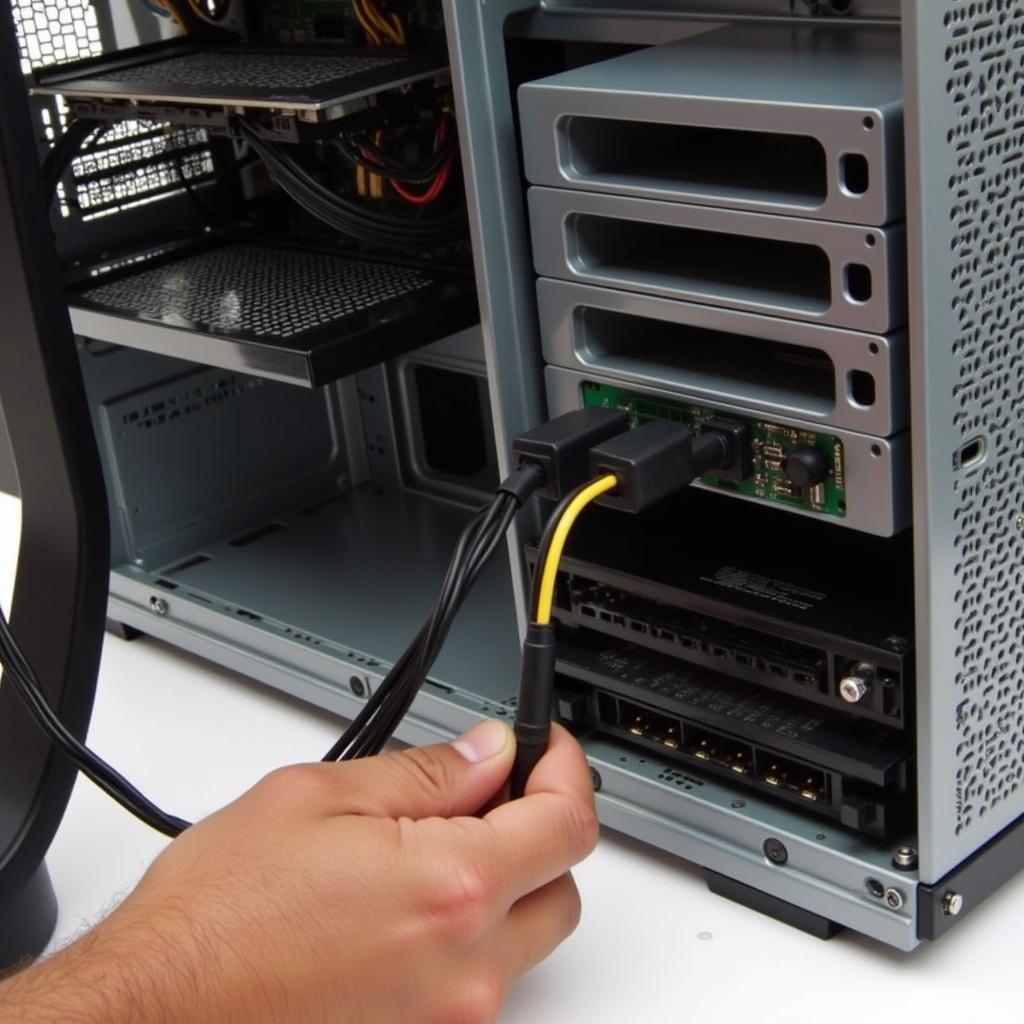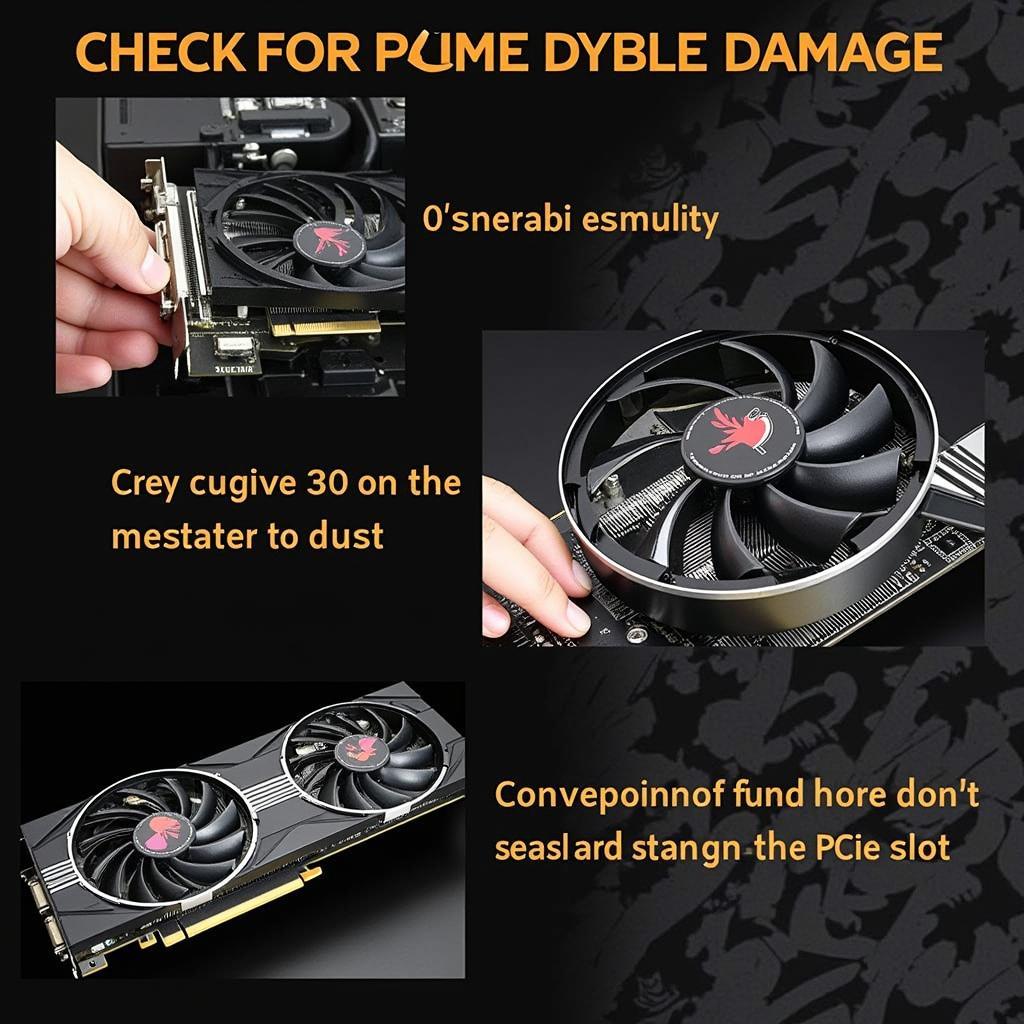A black screen accompanied by your GPU fan spinning at maximum speed can be a terrifying experience for any PC user. This typically indicates a critical issue that prevents your computer from booting properly. While it might seem daunting, there are several troubleshooting steps and potential solutions to get your system back up and running.
Understanding the Problem: Why a Black Screen and Max Fan Speed Occur
When your computer encounters a problem during startup, it often triggers a safety mechanism. The black screen prevents further damage by halting the display output, while the GPU fan going into overdrive aims to dissipate potentially excessive heat caused by the underlying issue.
Here are some of the most common culprits behind this problem:
- Hardware failure: A faulty graphics card, motherboard, RAM, or power supply unit can all lead to this issue.
- Driver issues: Outdated, corrupted, or incompatible graphics drivers can cause conflicts, leading to a black screen.
- Overheating: Excessive heat buildup within the computer case can trigger the GPU fan to spin at maximum speed. If the overheating persists, it can lead to a system shutdown or black screen.
- Power supply problems: An insufficient or malfunctioning power supply unit may not provide enough power to the graphics card, causing it to malfunction.
- Incorrect display connection: A loose or faulty connection between the graphics card and the monitor can also cause a black screen.
Troubleshooting Steps for “Black Screen GPU Fan Max”
Before diving into potential solutions, it’s crucial to identify the source of the problem. This process involves systematically checking each component to isolate the culprit.
1. Check the Display Connection and Power Supply
 Checking Display Connection and Power Supply
Checking Display Connection and Power Supply
Start with the simplest solutions:
- Ensure the display cable is securely connected to both the graphics card and the monitor. Try a different cable or port to rule out cable or port issues.
- Verify the power cable to the monitor and the computer itself is plugged in properly and receiving power.
2. Inspect Your Graphics Card
 Inspecting Graphics Card for Damage or Dust
Inspecting Graphics Card for Damage or Dust
The graphics card is often the primary suspect in this scenario.
- Open your computer case and carefully inspect the graphics card for any visible damage.
- Ensure it’s properly seated in its PCIe slot on the motherboard.
- If possible, try reseating the graphics card or test it in a different PCIe slot.
3. Test Your RAM
Faulty RAM can also contribute to startup issues.
- If you have multiple RAM modules installed, try booting with only one module at a time to see if the issue persists.
- Test each module in different slots to further isolate the problem.
4. Rule Out Overheating
 Cleaning Dust Buildup Inside PC
Cleaning Dust Buildup Inside PC
Overheating can cause various system instabilities.
- Ensure your computer has adequate ventilation and that the CPU and GPU heatsinks are free from dust buildup.
- If you suspect overheating, consider reapplying thermal paste to the CPU and GPU.
5. Boot into Safe Mode
Booting into Safe Mode allows your computer to start with minimal drivers and programs, which can help diagnose driver or software conflicts.
- If your computer boots successfully in Safe Mode, try uninstalling and reinstalling your graphics card drivers.
- Consider updating to the latest drivers or rolling back to previous versions if recent updates seem to have triggered the issue.
Seeking Professional Help
If you’ve exhausted all troubleshooting steps and are still facing the “Black Screen Gpu Fan Max” problem, it’s advisable to seek professional help from a qualified computer technician. They can diagnose the problem more accurately and perform any necessary repairs.
Conclusion: Don’t Panic, Troubleshoot!
A black screen with your GPU fan at maximum speed can be alarming, but it’s not always a sign of catastrophic hardware failure. By following the troubleshooting steps outlined in this article, you can often identify and resolve the problem yourself. Remember, patience and a systematic approach are key to getting your system back in working order. If in doubt, seeking professional assistance is always a wise decision.


